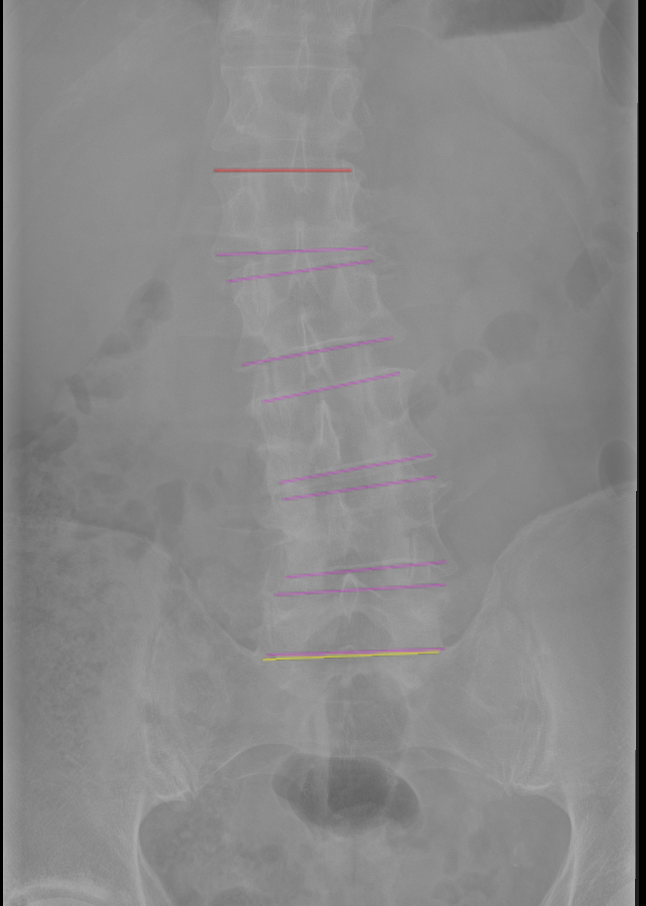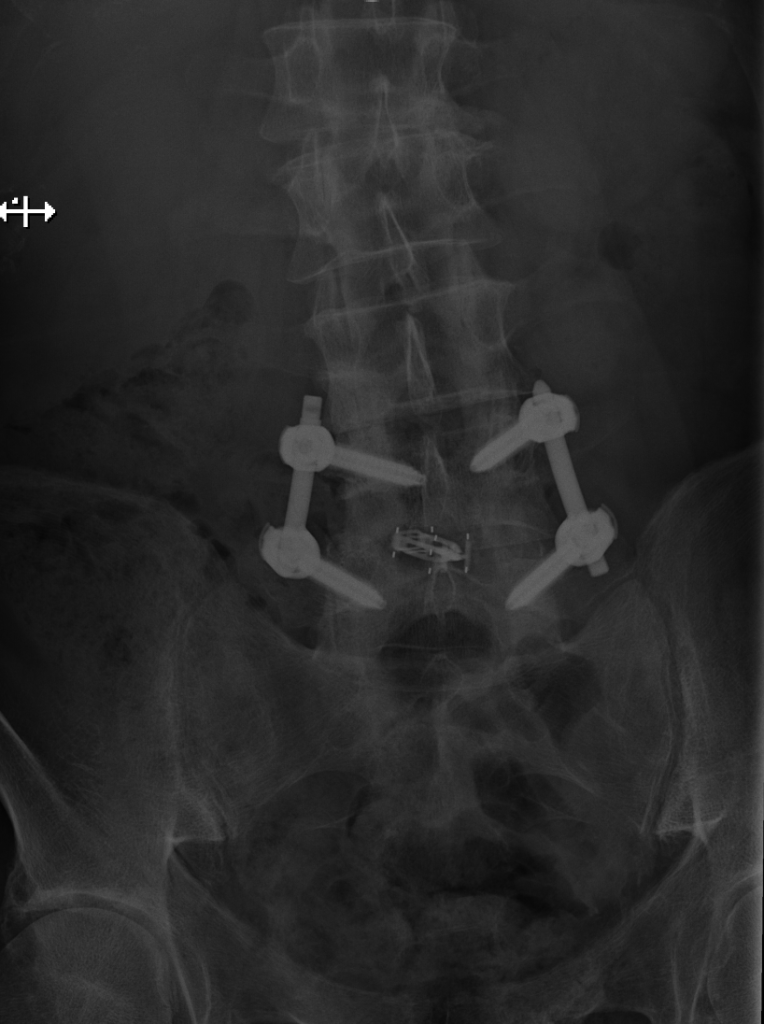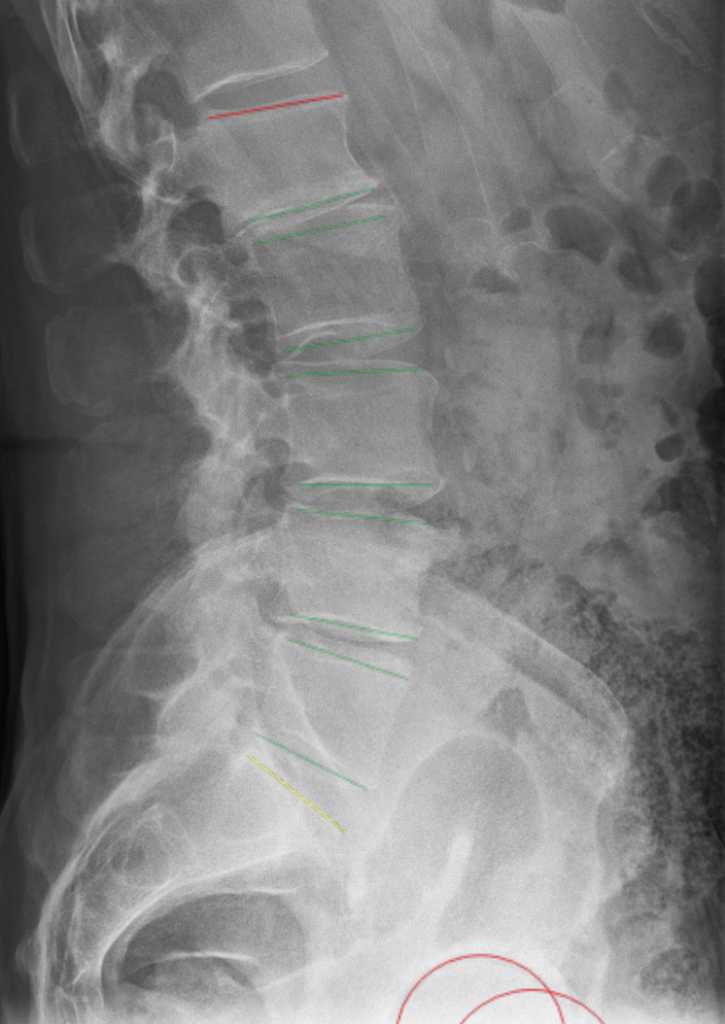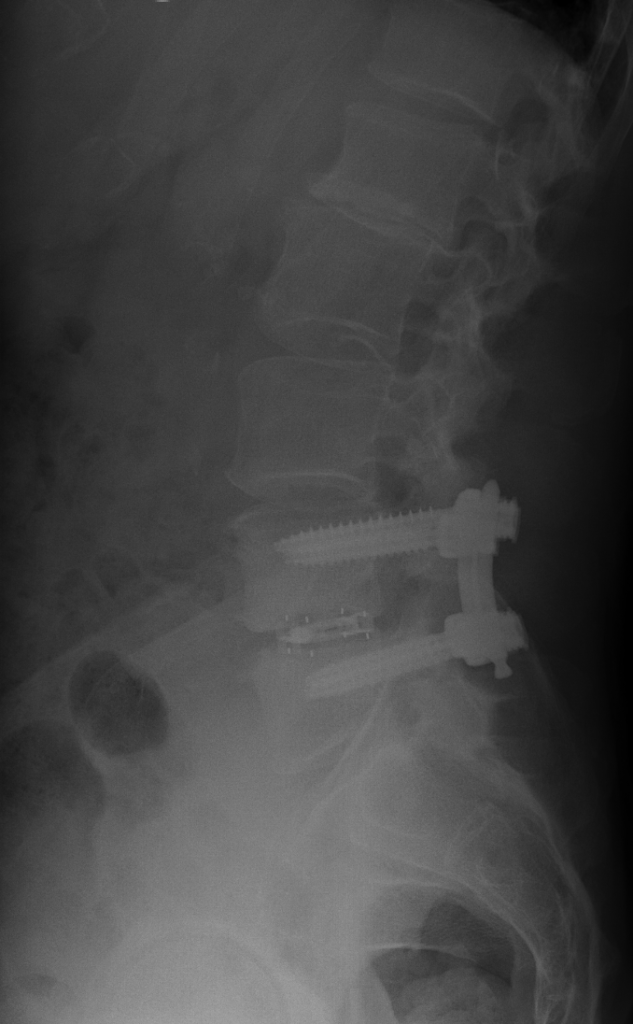Overview
Minimally invasive TLIF is performed to treat conditions such as degenerative disc disease, spondylolisthesis, or spinal stenosis when non-surgical treatments have not provided sufficient relief.
Minimally invasive TLIF is a type of spinal surgery designed to relieve lower back and leg pain by fusing two or more lumbar vertebrae through small incisions—resulting in less tissue damage, quicker recovery, and smaller scars.
Minimally invasive TLIF is performed to treat conditions such as degenerative disc disease, spondylolisthesis, or spinal stenosis when non-surgical treatments have not provided sufficient relief.
TLIF is recommended for patients with persistent back and leg pain due to disc degeneration, vertebral slippage, or spinal narrowing. The minimally invasive approach minimizes muscle disruption, reduces blood loss, and promotes faster recovery compared to traditional open surgery.

Pre-operative X-Ray AP

Post-operative X-Ray AP

Pre-operative X-Ray Lateral

Pre-operative X-Ray Lateral
Minimally invasive TLIF offers benefits such as smaller incisions, reduced muscle damage, quicker recovery, and a lower risk of infection compared to open surgery. However, as with any surgery, risks include infection, bleeding, nerve injury, non-union, and, in rare cases, persistent groin or thigh pain.
Lumbar fusion surgery significantly improves function and pain in the majority of patients. To learn more about Prof Aaron Buckland’s patient-reported outcomes for various lumbar fusion procedures, please click here.
Ready to take the next step? Contact our expert team today to schedule a consultation and explore your treatment options.
Contact Us Refer a Patient